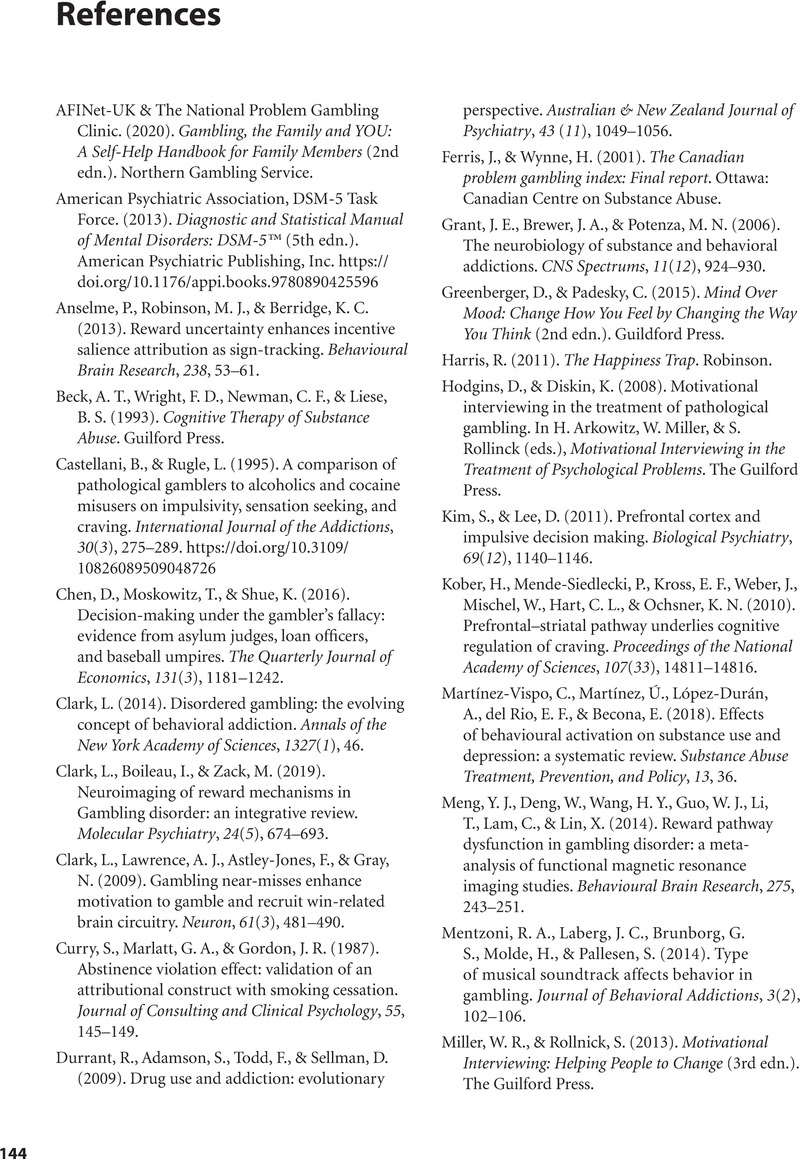Book contents
- Breaking Free
- Breaking Free How To Stop Gambling
- Copyright page
- Contents
- Acknowledgements
- Contributors
- 1 Introduction
- 2 How Do I Know if I Have a Gambling Disorder?
- 3 ‘I Should Quit but I Don’t Want To’: Increasing Motivation
- 4 ‘Buying Time’: Limiting Access to Money and Gambling
- 5 How Gambling Hijacks Your Brain
- 6 Retraining the Brain: Rewarding Yourself
- 7 Coping with Cravings and Urges
- 8 ‘Catching’ and Limiting Triggers Early
- 9 Things to Do When You Don’t Gamble
- 10 The Thinking Traps Driving Gambling
- 11 Challenging Gambling Thinking and Beliefs
- 12 How to Get Back on Track after a Slip
- 13 Don’t ‘Switch On’ the Auto-pilot: Future Planning
- 14 How Important Others Can Help
- 15 Final Remarks
- Appendix When to Consider Medication for a Gambling Disorder
- References
- Index
- References
References
Published online by Cambridge University Press: 16 June 2022
- Breaking Free
- Breaking Free How To Stop Gambling
- Copyright page
- Contents
- Acknowledgements
- Contributors
- 1 Introduction
- 2 How Do I Know if I Have a Gambling Disorder?
- 3 ‘I Should Quit but I Don’t Want To’: Increasing Motivation
- 4 ‘Buying Time’: Limiting Access to Money and Gambling
- 5 How Gambling Hijacks Your Brain
- 6 Retraining the Brain: Rewarding Yourself
- 7 Coping with Cravings and Urges
- 8 ‘Catching’ and Limiting Triggers Early
- 9 Things to Do When You Don’t Gamble
- 10 The Thinking Traps Driving Gambling
- 11 Challenging Gambling Thinking and Beliefs
- 12 How to Get Back on Track after a Slip
- 13 Don’t ‘Switch On’ the Auto-pilot: Future Planning
- 14 How Important Others Can Help
- 15 Final Remarks
- Appendix When to Consider Medication for a Gambling Disorder
- References
- Index
- References
Summary

- Type
- Chapter
- Information
- Breaking FreeHow To Stop Gambling, pp. 144 - 145Publisher: Cambridge University PressPrint publication year: 2022



